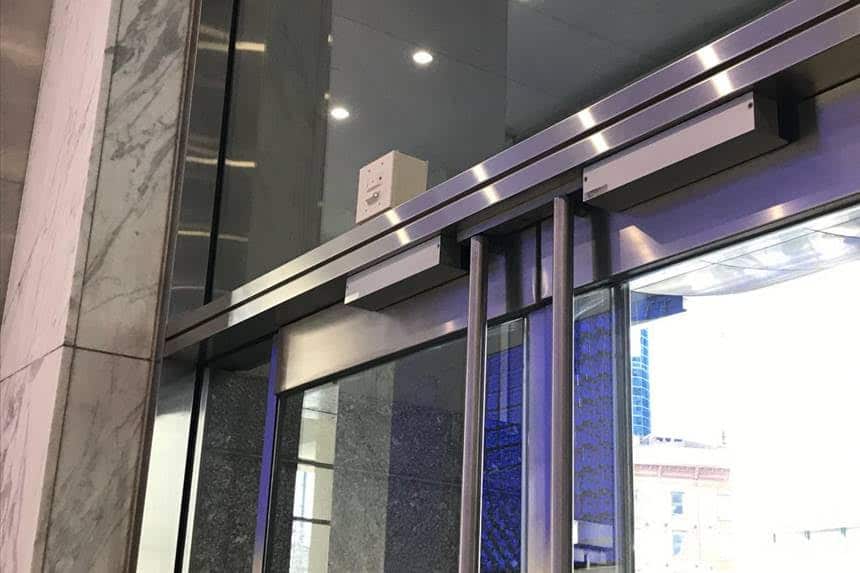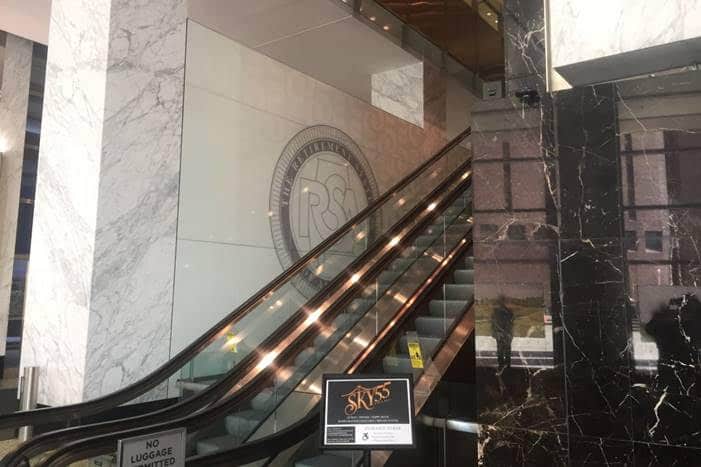Companies Roll Out Gunshot Detectors at the Office – The Wall Street Journal
Fearing attacks, firms install sensors to track, help neutralize active shooters; systems’ true purpose often masked for fear of sparking a panic.

By Chip Cutter
Feb. 19, 2019 6:30 a.m. ET
Corporate executives worried about workplace shootings are quietly installing gunfire-detection systems in U.S. offices and factories. Most don’t tell employees what the sensors are, for fear of alarming them.
The rapid uptick in adoption of gunshot sensors follows a wave of workplace shootings in the past year. The latest occurred Friday when a man opened fire at an Aurora, Ill., factory following his termination, killing five co-workers and injuring five police officers. Deadly incidents in recent months include shootings at the California headquarters of YouTube, in the lobby of Fifth Third Bancorp in Cincinnati, at a Maryland newspaper and in a Florida hot-yoga studio.
Shootings are “so frequent now, people are starting to accept it,” said Brink Fidler, who spent close to two decades in law enforcement in Nashville, Tenn., and now runs his own active-shooter training company, Defend Systems. “The more often these happen…the more people you have going, ‘We have to do something.’ ”
At Rackspace, a cloud computing company in San Antonio, management deployed 150 gunshot-detection sensors around its cavernous office in a converted shopping mall. “You can’t install metal detectors at the doors and have guards patting people down,” said Mark Terry, Rackspace’s director of global enterprise security. “So what’s the next best thing?”
The sensors blend in to walls and the ceiling, and look similar to fire-safety equipment. “I’ve told people they’re air-quality sensors before and they don’t even second guess it,” Mr. Terry said.
Originally developed for the battlefield, many sensors use a combination of acoustic and infrared technology to “see” the flash of a gunshot while also hearing it. The systems can be wired to alert police and instantly send texts, calls and desktop notifications to employees, flashing messages to tell workers how to respond in an emergency.
Once the sensors detect a gunshot on a floor, the devices can track a gunman—integrating with camera systems—as he moves through a building, in theory allowing police to zero in faster and neutralize the threat. One reason many companies don’t explain to employees what the devices do is that they fear somebody will try to test them out by bringing a gun to work, security experts said.
Gunshot detectors now exist in employee cafeterias, meeting rooms and distribution centers, among other locations. Toyota Motor Corp. installed them at an auto plant in Kentucky. Pharmaceutical giant Allergan PLC and Corona beer maker Constellation Brands Inc. have put gunshot-detection systems at some offices and facilities.
An Allergan spokesperson said employee safety is a priority and the detection system is “one part of our multilayered security platform that helps us respond to situations quickly.” Constellation Brands declined to comment. At Saks Fifth Avenue’s flagship store in New York, the devices are perched over beauty and jewelry counters.
In 55 Water Street, one of the largest office buildings in Manhattan and home to S&P Global Inc. and Hugo Boss, about a dozen sensors are scattered through the lobby and beside an escalator, said Scott Bridgwood, vice president of operations for New Water Street Corp., which manages the building. The cost, so far, has been less than $100,000, and Mr. Bridgwood said he hopes to have the devices on every floor at some point. He sees tremendous benefits to having the technology widely deployed and linked to local authorities to hasten response times.
“In an active-shooter situation, who’s calling 911?” Mr. Bridgwood asks. “I expect them to get out.”
The Charleston, S.C., airport put gunshot sensors near ticketing and baggage-claim areas. “I’d rather be prepared and not use it than need it and not have it,” said Paul Campbell Jr., chief executive of the Charleston County Aviation Authority.
The sensors cost around $1,200 each, and big employers can spend anywhere from $10,000 to hundreds of thousands of dollars on the systems. Many more major corporations have purchased the devices recently, The Wall Street Journal found.
Some security advisers question whether money spent on gunshot detectors could be better used on more robust active-shooter training, assessments to determine gaps in building security, or physical barriers, such as door locks and ballistic glass, to deter a shooter.
“I would tell companies to take a breath,” said Jesus M. Villahermosa Jr., who spent three decades in law enforcement in the Tacoma, Wash., area, including on the SWAT team, and now runs security consulting firm Crisis Reality Training Inc. Mr. Villahermosa said he sees the value in the detectors, but cautioned: “Don’t just believe that a system is going to solve your problem.”
While building codes mandate lifesaving equipment such as fire alarms, no such regulation exists for gunshot detectors. Indoor systems are still new enough that many law-enforcement experts remain unfamiliar with them, and research on their effectiveness is limited, says Ronal Serpas, a professor at Loyola University in New Orleans, and the city’s former police superintendent.
Shooter Detection Systems LLC is among the biggest sellers of the systems and has more than 18,000 devices deployed. Chief Executive Christian Connors says the company has never had a false positive, thanks to years of refining the product, which is based on technology developed in the 1990s by the U.S. Defense Advanced Research Projects Agency, also known as Darpa.
The sensors can distinguish between a gunshot and a car backfiring, firecracker exploding or balloon popping because they listen for the specific signature sound of a muzzle blast, he said.
Those who have purchased the technology say it could save lives in an emergency when seconds matter. Some privacy experts wonder just how much monitoring the sensors are doing since they essentially mike the workplace 24/7. Mr. Connors says his gunshot detectors have “zero ability to transmit any audio whatsoever out of the sensor. It’s impossible.”
Sales at Shooter Detection Systems are up 400% in the past year, with Fortune 500 companies now representing the firm’s biggest base of clients, Mr. Connors said. He declined to name the firm’s customers.
Public records show that the Georgia Institute of Technology in Atlanta spent more than $200,000 in 2018 to put 95 sensors from Shooter Detection Systems across its campus, including the cost of installation, cabling and software.
More schools have been eyeing the technology, but some feel if they install them in one building, they must install them in all, security experts say, a stipulation that may prove cost-prohibitive. Mr. Connors said his company will soon introduce a package of sensors priced below $10,000 for schools.

Write to Chip Cutter at chip.cutter@wsj.com